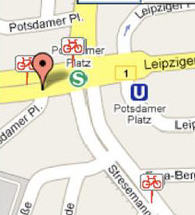Flexible Services
Flexible services covers a very broad spectrum of mobility services. It is easier to define by what it is not - not fixed route, fixed schedule bus service. Flexible services are initiated by users and designed to accomodate individual user needs. Conventional flexible services include ADA paratransit, taxi, livery, route deviated bus, etc. The cases below stretch the conventional definition. They each include a marriage of wireless communications and mobility services. Together, new flexible services empower users to choose the most appropriate means for mobility. This is the New Mobility Revolution.
The Computer Commuter case was first proposed by Anton Nelessen in the early 1990's, before the explosion of Internet-enabled devices. The objective is to serve suburban and ex-urban areas with a point-to-point network, initially using existing bus stops. The operational concept is targeted to optimize service for individuals and to be productive with short trips. The concept is still a good one and there is the information technology to really implement the visonary concept.
Readers are encouraged to recommend new case studies. Dwight Mengel
The Computer Commuter case was first proposed by Anton Nelessen in the early 1990's, before the explosion of Internet-enabled devices. The objective is to serve suburban and ex-urban areas with a point-to-point network, initially using existing bus stops. The operational concept is targeted to optimize service for individuals and to be productive with short trips. The concept is still a good one and there is the information technology to really implement the visonary concept.
Readers are encouraged to recommend new case studies. Dwight Mengel
Individual Mobility Services: Closing the Gap between Public and Private Transport

One Trip, One Information, One Ticket.
Posting Date: Nov 14, 2008
Authors: Christian Maertins & Dr. Hinrich Schmöe
Venue: 1st Eastern Mediterranean Conference on Intermodal Passenger Travel
Full Document in: PDF
Flexible Transport Services and ICT platform for Eco-Mobility

click image for website
Acronym of the case: FLIPPER
Web address of the case: http://www.interreg4cflipper.eu/
Country of the case:
Austria , Greece , Ireland , Italy , Portugal , Spain , United Kingdom
Flexible Transport Services | cost-effectiveness | public transport
Posting Date: 27 June 2011
Last Edited Date: 27 June 2011
Author: Ramazzotti Dora (SRM - Reti e Mobilità - Public Transport Authority Bologna)Italy
Case Abstract
The overall objective of FLIPPER is the transfer of experience, knowledge and good practices about Flexible Transport Services (FTS) among different European Regions with the aim of increasing the social inclusion of disadvantaged citizens groups and/or areas, reducing energy consumptions and environmental impacts thus encouraging sustainable social/economic growth. Read more ...
Flipper Virtual Library

The FLIPPER Virtual Library is an on-line repository, and Europe ’s leading source of information, on Flexible Transport Systems. Originally developed in the CONNECT project (a Co-ordination Action financed by the European Commission under the Sixth Framework Programme which ended in 2006) FLIPPER has taken over management of the Library and will be updating it with materials from the project as well as other current documentation on flexible transport which partners become aware of. To access the documents contained in the virtual library click on the link below and follow the instructions.
Visit the Virtual Library
Visit the Virtual Library
The Computer Commuter: Neighborhood Transit for the 21st Century

Reprinted from the USDOT Travel Mode Improvement Program
Author: Anton C. Nelessen
Source: Urban Design, Telecommunication and Travel Forecasting Conference: Summary, Recommendations and Compendium of Papers
Publisher: Travel Model Improvement Program, Arlington TX
Abstract: This conference is focused on the potential impact of telecommunications on the future. Today we have heard a great deal about the potential relationship between land use and communications. I want to present a concept I have been researching for the past four years. I am currently completing a feasibility study to apply this concept in Bergen County, New Jersey. It combines the electronics of communication with small vehicles thereby allowing people to move easy and efficiently in the current sprawled urban pattern. It also provides an ideal transit mode to enhance the emerging neo-traditional urban form, and is an ideal retrofit for small communities and rural areas that can’t afford any type of transit. It is only possible today because of the current evolution of computer, communications and satellite technology.
Year Published: 1997
Notes: This is not the actual presentation given at the Urban Design, Telecommunication and Travel Forecasting Conference October 27 - 30, 1996, in Williamsburg, VA, but is a paper Anton Nelessen wrote and supplied on the same topic.
Subject Category: Travel demand modeling
Full Document in: HTML | PDF
